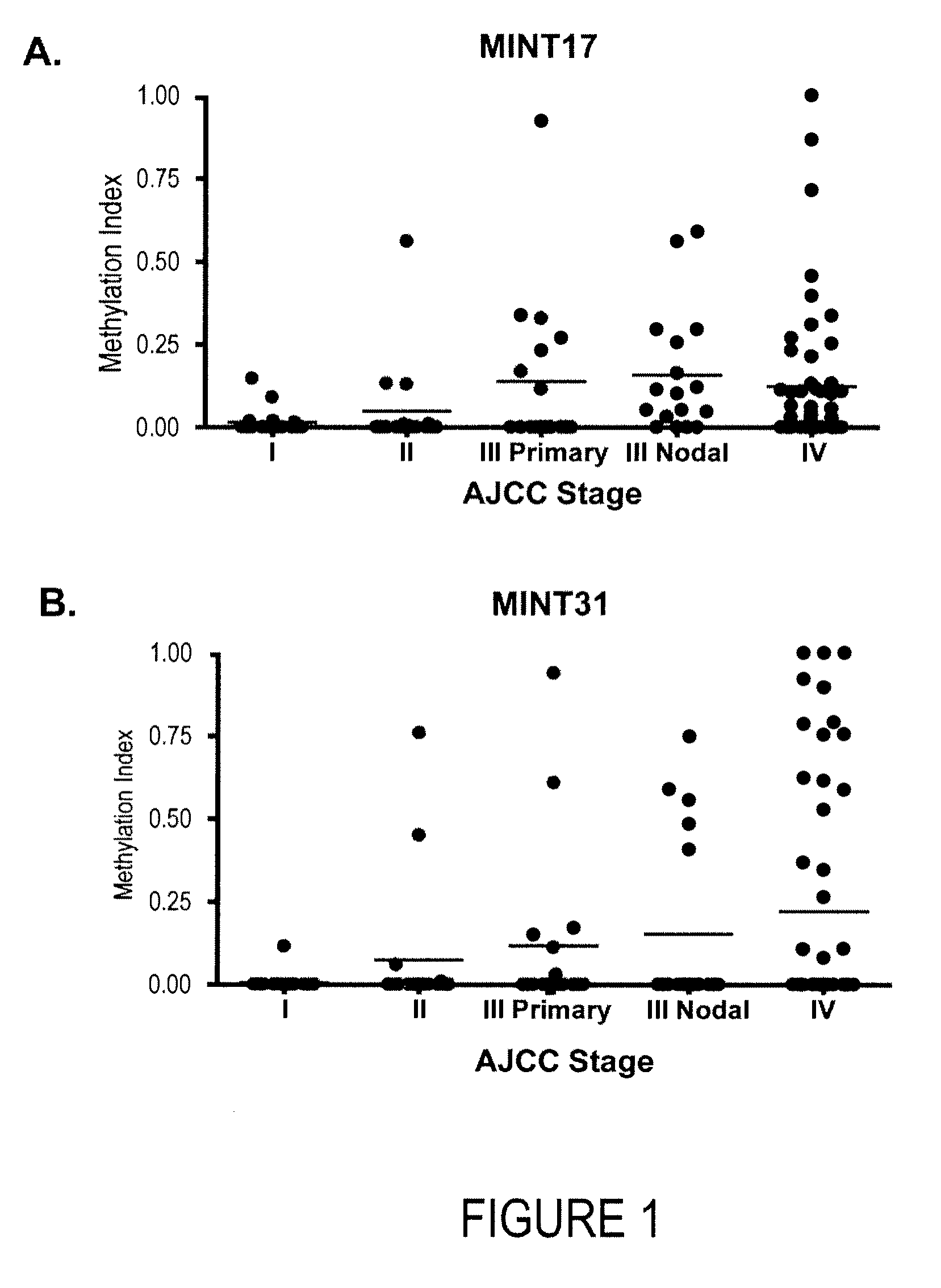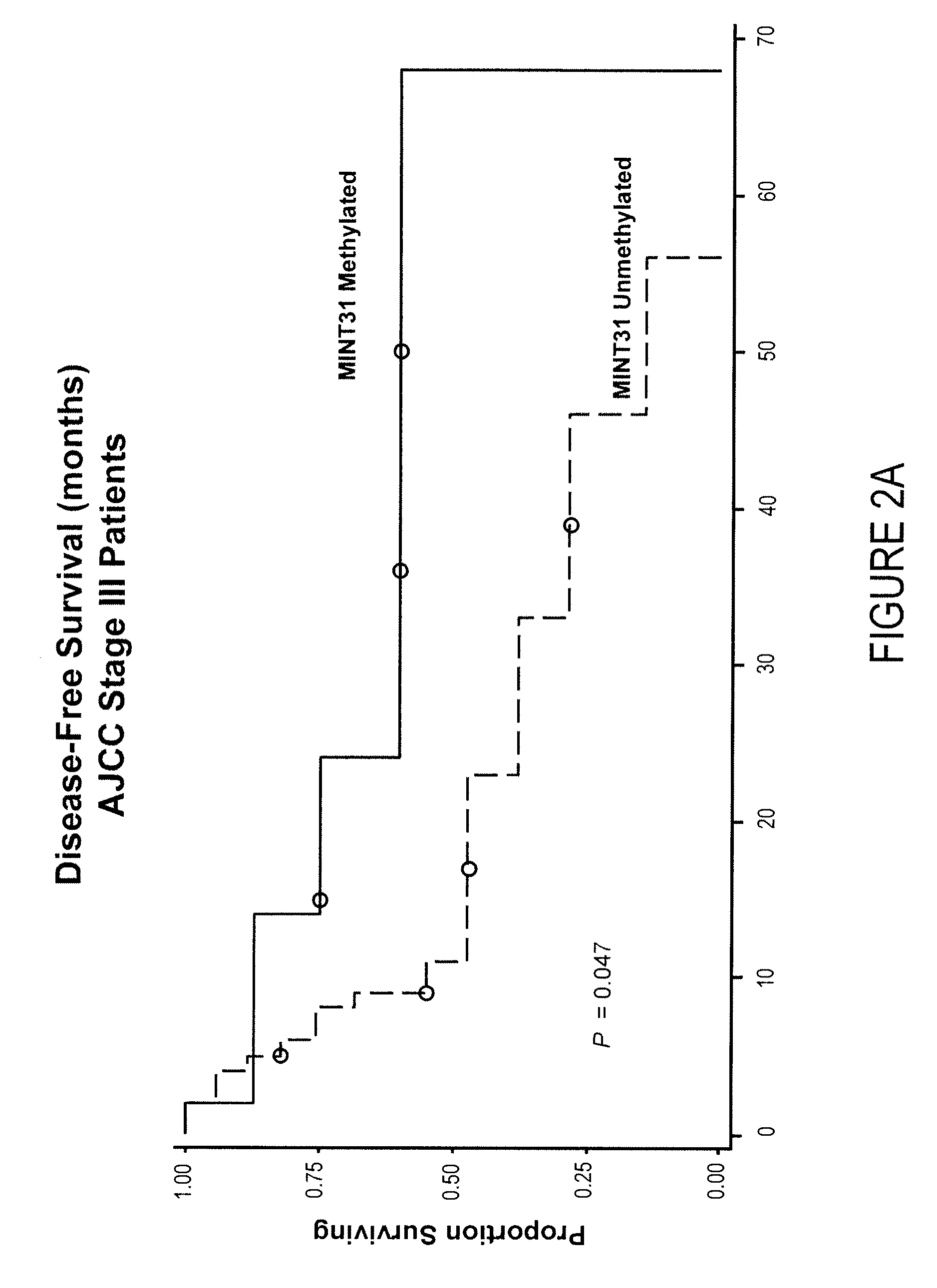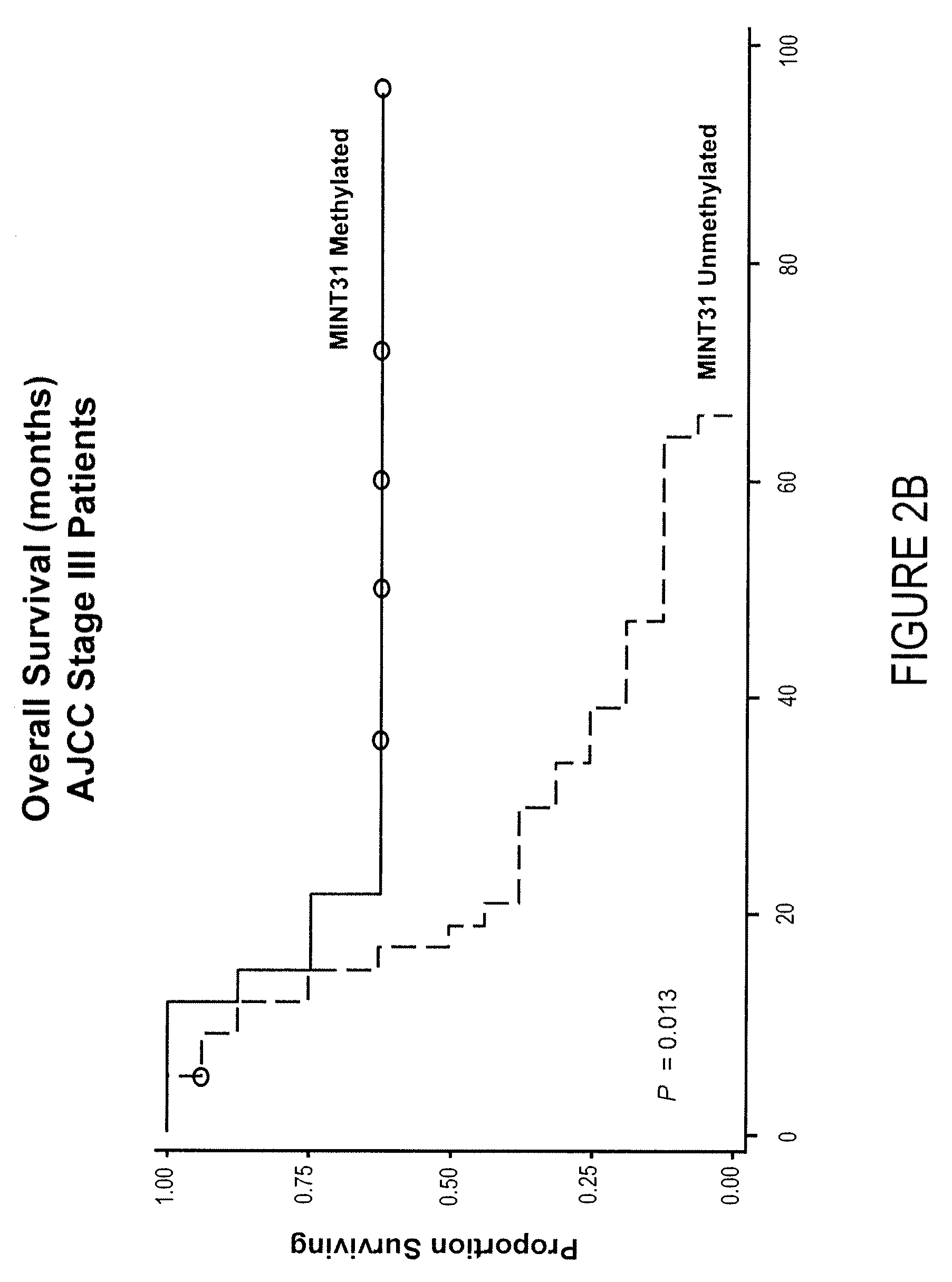Use of methylation status of mint loci and tumor-related genes as a marker for melanoma and breast cancer
a tumor-related gene and locus-methylation technology, applied in the field of mint (methylated intumor) loci and tumor-related genes, can solve the problems of limited clinical utility limited studies addressing the role of epigenetic changes during early tumor progression, etc., and achieves a higher level of methylation and less likelihood of overall survival
- Summary
- Abstract
- Description
- Claims
- Application Information
AI Technical Summary
Benefits of technology
Problems solved by technology
Method used
Image
Examples
example i
CpG Island Methylator Phenotype Predicts Progression of Malignant Melanoma
Abstract
[0075]Purpose: The CpG island methylator phenotype (CIMP) may be associated with development of malignancy through coordinated inactivation of tumor-suppressor and tumor-related genes (TRGs) and methylation of multiple noncoding, methylated-in-tumor (MINT) loci. These epigenetic changes create a distinct CIMP pattern that has been linked to recurrence and survival in gastrointestinal cancers. Be cause epigenetic inactivation of TRGs also has been shown in malignant melanoma, we believed the existence of a clinically significant CIMP in cutaneous melanoma progression. Experimental Design: The methylation status of the CpG island promoter region of TRGs related to melanoma pathophysiology (WIF1, TFPI2, RASSF1A, RARβ2, SOCS1, and GATA4) and a panel of MINT loci (MINT1, 2, 3, 12, 17, 25, and 31) in primary and metastatic tumors of different clinical stages (n=122) was assessed. Results: Here, we show an in...
example ii
Assessment of MINT 17 Methylation in Primary Breast Cancer and Normal Breast Epithelia
Abstract
[0122]Background: Methylated-in-tumor loci (MINTs) are non-coding DNA sequences containing CpG islands. The aim of this study was to assess the presence of aberrant methylation of MINT 17 in primary breast cancer. We believed that MINT 17 methylation index is significantly higher in primary breast tumor tissue than in normal breast tissue.
[0123]Methods: Paraffin-embedded breast tissues of 42 patients were collected. This selection comprised 26 breast cancer and 16 non-breast cancer patients. DNA was isolated from primary tumor tissues, and normal breast epithelia DNA was isolated from non-cancer breast tissue. DNA was subjected to sodium bisulfite modification. Absolute quantitative assessment of methylated alleles (AQAMA) was performed to assess methylation status of MINT 17 by multiplex quantitative methylation-specific PCR. The results were expressed as methylation index (MI): MI=methyla...
example iii
Absolute Quantitative Assessment of Methylated Alleles in Breast Cancer
Objectives:
[0134]To determine the value of quantification of DNA methylation in predicting survival and prognosis of patients with infiltrative ductal carcinoma of the breast, using a panel of 4 DNA markers.[0135]To assess presence of a “methylator phenotype” (i.e., can patients be clustered in meaningful groups according to the methylation status of these 4 markers?). To study potential relation of a methylator phenotype in biological behavior and molecular subtypes of breast cancer.[0136]To relate methylation markers to tumor / pathological characteristics.
Background:
[0137]There is increasing evidence that breast cancer is a heterogeneous disease comprising separate molecular subtypes; it has been proposed that breast cancer may in fact be a collection of several distinct diseases. Current models for staging and classification fall short in accurately predicting disease behavior and outcome. Moreover, failure of ...
PUM
 Login to View More
Login to View More Abstract
Description
Claims
Application Information
 Login to View More
Login to View More - R&D
- Intellectual Property
- Life Sciences
- Materials
- Tech Scout
- Unparalleled Data Quality
- Higher Quality Content
- 60% Fewer Hallucinations
Browse by: Latest US Patents, China's latest patents, Technical Efficacy Thesaurus, Application Domain, Technology Topic, Popular Technical Reports.
© 2025 PatSnap. All rights reserved.Legal|Privacy policy|Modern Slavery Act Transparency Statement|Sitemap|About US| Contact US: help@patsnap.com



